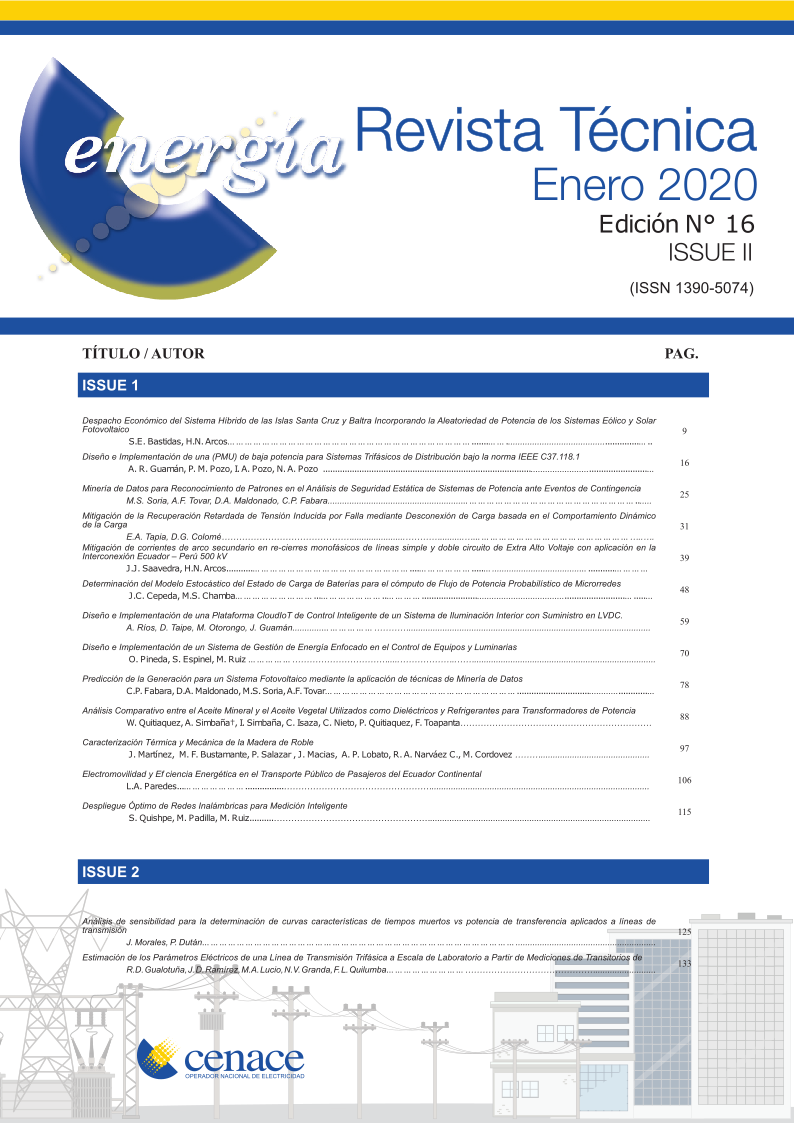Mobility and Energy Efficiency in the Public Transportation System of Ecuador a Mechanism to Reduce CO2 Emissions
Main Article Content
Abstract
The aim and focus of this document is to continue with the development and advance of a predecessor work in relation to the theme of the public transport system of Continental Ecuador and the environmental benefits and in terms of energy efficiency that the country will incur with technological migration of diesel buses through systems based on electric mobility through electric buses, in three different scenarios of occurrence. The methodology has been developed in conjunction with the projections of demand for electric power that will be incurred by the National Interconnected System (SNI) due to the application of an electric mobility system through electric buses in the public passenger transportation service. Subsequently, an analysis of the calculation and evaluation of carbon dioxide (CO2) emissions due to the diesel bus fleet is established, as well as the evaluation of CO2 emissions from the Ecuadorian SNI with its fossil fuel-based thermal generation component once the buses have been technologically changed to electric mobility, in the period 2019-2025. The results reveal the reduction of CO2 emissions to the environment due to the technological migration towards an electromobility system for public passenger transport even considering the premise that the Ecuadorian electricity sector has considerable participation of thermal power plants in its electricity supply matrix.
Downloads
Article Details
Aviso de Derechos de Autor
La Revista Técnica "energía" está bajo licencia internacional Creative Commons Reconocimiento-NoComercial 4.0.




